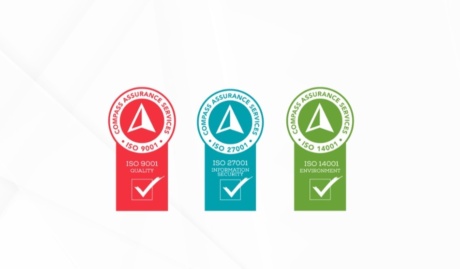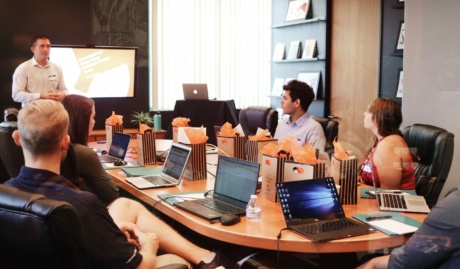Defining your IT strategy is a powerful step towards success, yet alarmingly we still find organisations that don’t take the time to clarify what they expect or require from IT. At its simplest your IT strategy is a statement of how you intend to use IT to support your over-arching business goals. You don’t have unlimited resources to spend on IT, so your IT strategy is there to clarify where you will focus your efforts, and equally as important where you will not.
In our work with clients formulating and executing on their IT strategies we often see clear trends emerging over time in response to the ever-changing IT landscape. Of course, every company will have their own unique IT strategy, but common patterns can emerge.
As we work with our clients in preparation for the year ahead, we are seeing the following three themes appearing with consistency.
Related: Why aligning your IT strategy with business goals is critical for success
User Experience
In response to the pandemic the world of work has changed significantly, also significantly shifting how people relate to their employment, the environments they work in, and the tools that they are expected to use. Simply put, user experience has become a critical element in every IT strategy.
But what does this mean for your organisation? It means that employees are expecting easy-to-use, efficient and user-friendly technology solutions that allow them to do their job effectively from any location. This includes everything from remote working tools to cloud-based collaboration platforms, all accessible as easily from their smartphone as their home office.
They are also expecting to have fingertip access to the information and expertise that they need, with top-tier training and support services available when required.
So, as you plan your IT strategy for 2024, make sure that user experience is at the forefront of your decision making and investment plans. Put yourself in the shoes of your employees and consider their daily tasks and interactions with technology – are they seamless, intuitive and empowering? If not, it’s time to make some changes.
Cybersecurity
As technology continues to evolve and become increasingly intertwined with our daily lives, the risk of cyber-attacks and data breaches has also risen exponentially. Cybersecurity is no longer just a concern for IT departments but should be a top priority for every organisation’s IT strategy, with direct board-level oversight.
A strong cybersecurity plan should include regular security audits, employee training on identifying and handling potential threats, as well as implementing the latest security software and protocols. Importantly in the post-pandemic world, your cybersecurity plan must also consider new ways of working. With many staff now working from home, old ways of securing your organisation may no longer be as effective.
Cybersecurity not a one-and-done task, but an ongoing process that must be continuously monitored and updated to stay ahead of potential threats. Make sure that your IT strategy reflects this and allocate appropriate resources to keep your organisation’s data safe and secure.
AI & Automation
2023 was the year that artificial intelligence hit the mainstream, with the release of ChatGPT throwing the floodgates open. The new-found accessibility of AI is emerging as an inflection point on the longer-term trend of business process automation, with the combination of the two promising significant opportunities.
AI and automation can streamline processes, improve efficiency, and reduce costs in almost every area of your organisation – from customer service to HR to supply chain management. It can also provide valuable insights and data analysis that humans may miss. As the technology continues to advance, it will only become more powerful and integrated with our daily lives.
It’s no longer a question of if but when AI and automation will become an integral part of every IT strategy. So, in the year ahead, make sure that you’re keeping up with the latest developments and considering how it can enhance your organisation’s operations and drive growth.
Conclusion
As we move towards 2024, it’s clear that user experience, cybersecurity and AI/Automation will continue to be pivotal elements of every IT strategy. Organisations must prioritize these areas to stay competitive and meet the evolving needs of their employees and customers. With a strong focus on these essential components, your IT strategy can serve as a roadmap for success in the ever-changing digital landscape.
Keep in mind, however, that these are just three of many elements to consider when crafting your IT strategy. As technology continues to advance, new challenges and opportunities will arise, requiring organisations to stay agile and adaptable.
Grassroots IT has many years of experience working with clients to formulate IT strategies that align with business goals and lead to tangible results. If you would like to talk about your IT strategy, contact us today.



















































